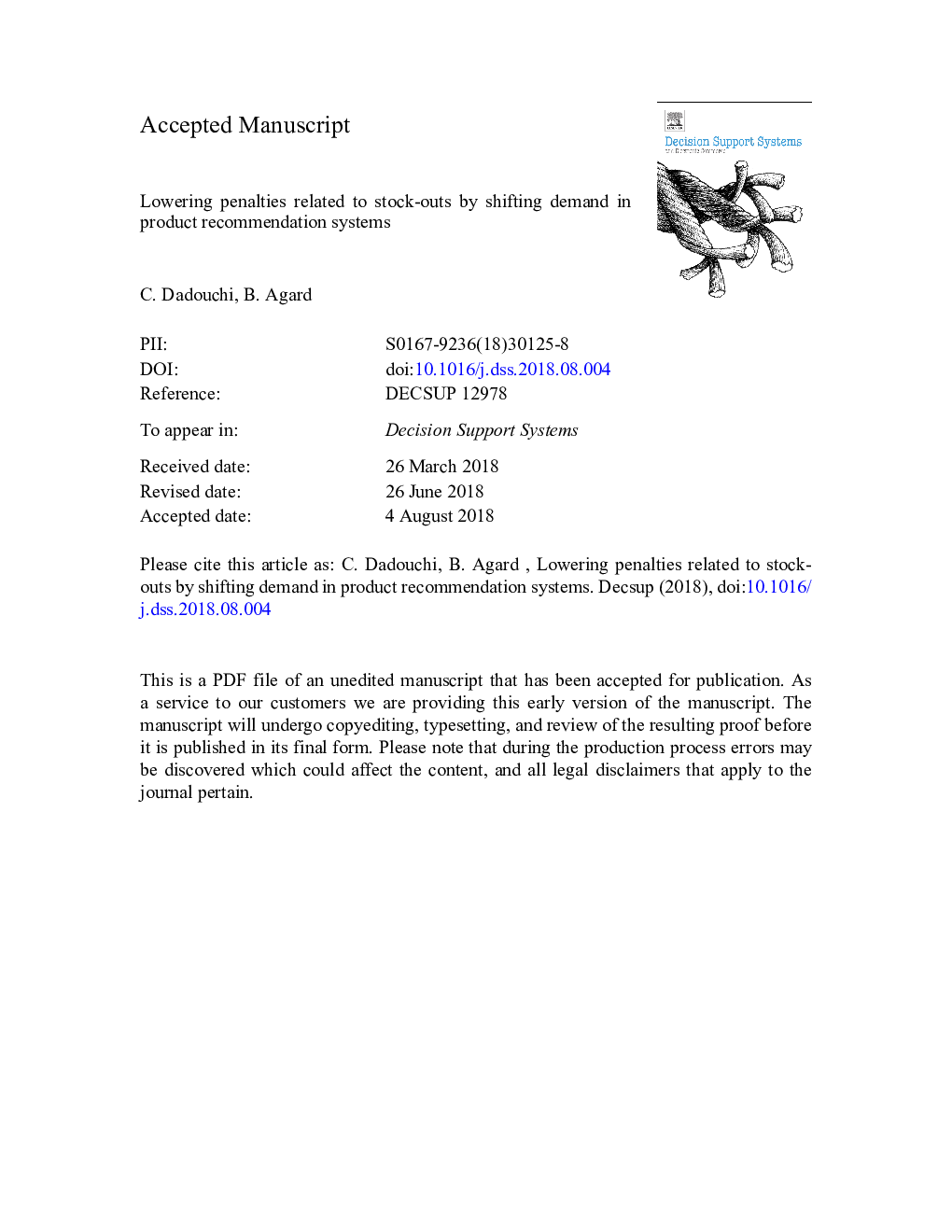| Article ID | Journal | Published Year | Pages | File Type |
|---|---|---|---|---|
| 9952404 | Decision Support Systems | 2018 | 39 Pages |
Abstract
Recommender systems focus on the various algorithms and techniques to get the most accurate prediction of users' preferences. We propose a method designed to consider actual stock levels in the recommendation process in order to shift demand toward specific products for a specific user. The method is displayed in two phases; the first is a categorization of customers, and in the second, item scores are corrected to take into account customer categorization and a company's strategy in stock allocation. Low inventory products will be recommended only to high lifetime value customers, and high inventory products will be recommended more often to all users. Based on a real situation from an industrial partner in a B2B context, experiments were conducted on simulated data representing recommender systems' scores modeled over data. Results indicate that penalties resulting from the recommendation of stock-out products are lowered.
Related Topics
Physical Sciences and Engineering
Computer Science
Information Systems
Authors
C. Dadouchi, B. Agard,
